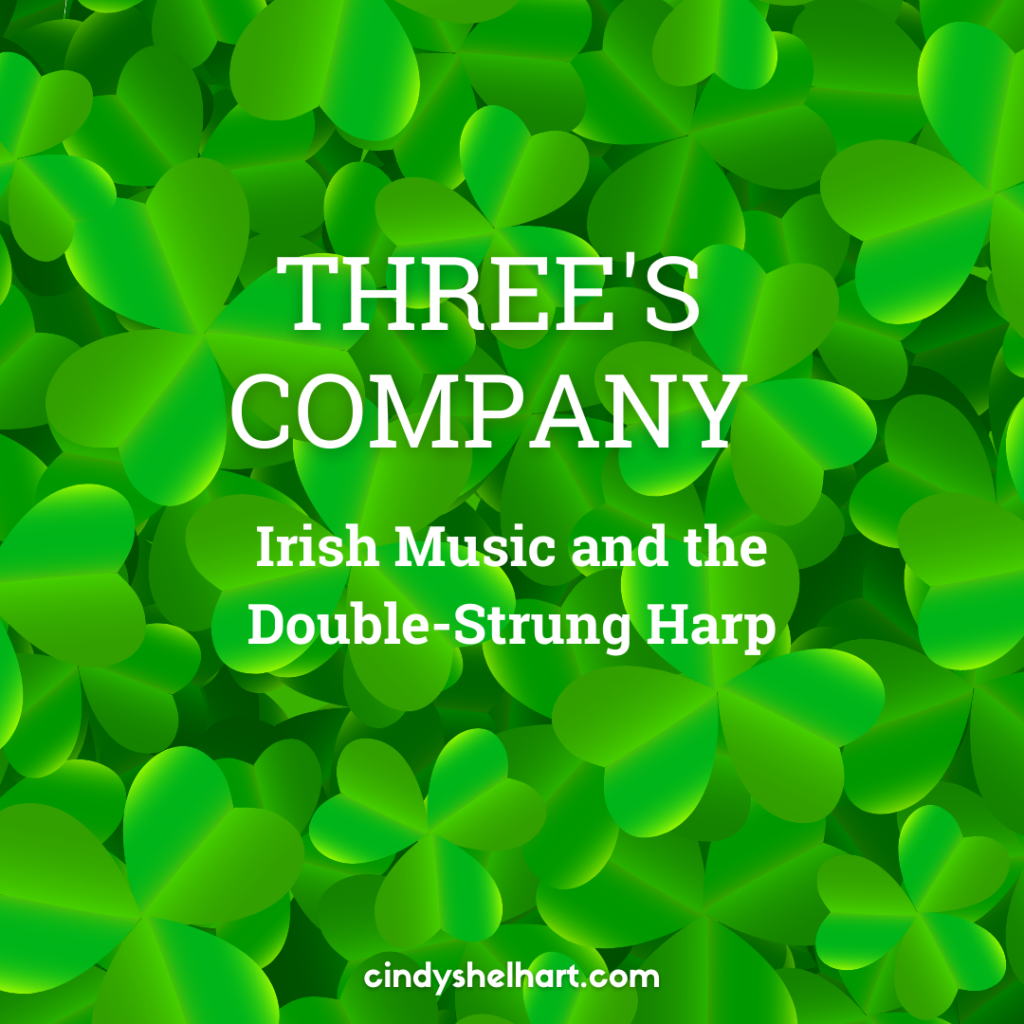Have you noticed that the Irish have a preference for things that come in threes? And that’s not just limited to three-leaf shamrocks, or the green-white-orange Irish flag.

The Irish have been using the “triad form” (arranging ideas by threes) for centuries, including in the Old Irish collection Trecheng Breth Féne “A Triad of Judgments of the Irish”, or “The Triads of Ireland”, from the 9th century. (Learn more in Triads of Ireland on Wikipedia.)
The Three Musics in History
And even earlier, Irish mythology used the number three in the story of the good god The Dagda and his magical harp (his greatest treasure), whose music could cause listeners to laugh, weep, or fall asleep. These three moods, or qualities, are sometimes called the “Three Noble Strains” or “The Three Musics” of harp music:
- Geantraí (“joyful music“)
- Goltraí (”sorrowful music“)
- Suantraí (“lullaby music“)
You can hear the modern Irish and Scottish Gaelic pronunciations of these terms here.
Later, these “noble strains” became the “three musics” required of ancient harpers in Ireland and Gaelic Scotland. In his first book, The Ancient Music of Ireland (Dublin, 1840), music collector Edward Bunting included the Old Irish spellings of these terms (geantraige, goltraige, and súantraige) which he learned from harpers at the 1792 Belfast Harp Festival.
You can learn more about the harp in Irish mythology in Scottish harper Ailie’s Robertson’s blog post.
And my US harper friend Jo Morrison wrote a 3-part tune to, in her words, “embody the three types of music required of ancient harpers, the music of joy, sorrow, and sleep.” This tune is the title track of her CD The Three Musics.
Good Things Come in Threes
So what do “The Three Musics” and the double-strung harp have in common? Easy—the number THREE!
When I created The Technique Triangle™, the easy way to make your double-strung harp “sound more like a double,” I literally based it on 3 basic techniques. Once you master these 3, you can use them in endless combinations, in a wide variety of music… which includes Irish music!
In my upcoming Irish music workshop for double-strung harp on February 12, we’ll learn 2 brand-new arrangements: a lullaby (suantraí) and a dance tune (geantraí), with the help of the Technique Triangle.
(Spoiler alert: Split Technique is awesome in helping you play Irish dance tunes on your double harp!)
I invite you to join us for the February 12 Irish DSH Workshop—registration is open through February 9.
Cheers!

Hi Cynthia, will the workshop be saved and available online for later viewing ( if registers and paid for)? For Australians your time slots are difficult. Eg for me, it is a 5.45am workshop AEDT and I would need to get up and dressed earlier still! Thank you Wendy
Hi Wendy, that would be early indeed! Yes, definitely, the workshop will be recorded & available for replay to registrants, along with the arrangements, through 31 March 2022. Hope that helps! C